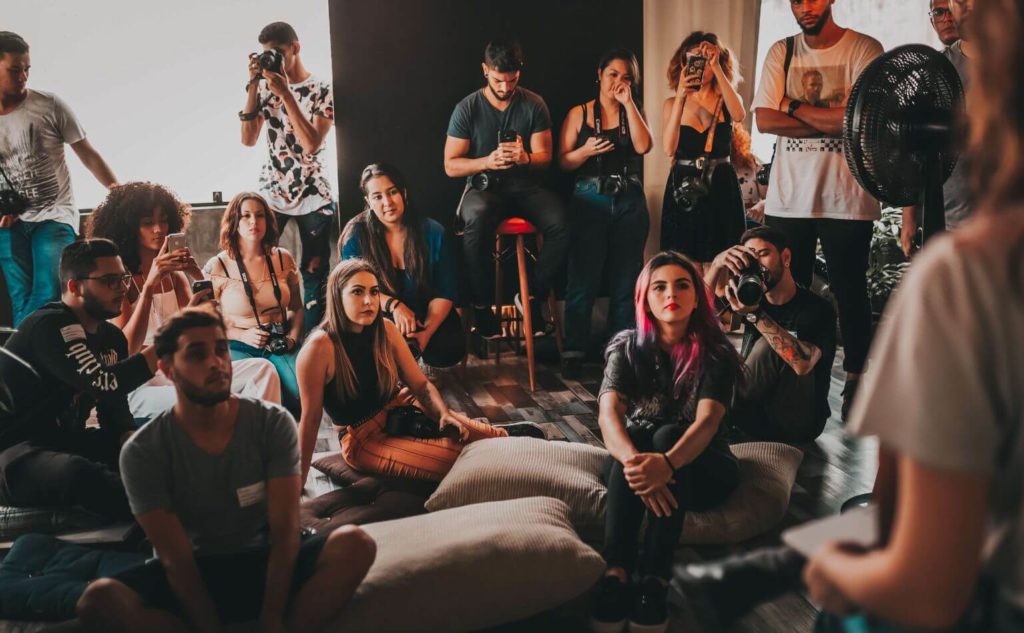Sound is rated as the second-most information-rich sense, behind eyesight. It’s one of the most influential aspects of your brand’s identity.
For radio and TV ads, animations and videos, soundbites, audiobooks, and more, a voice-over artist represents your business through audio and gives your brand a human element.
People are listening to a real-life human being rather than just reading words on a screen. You want that chosen voice to resonate with your audience. Let’s examine how to go about choosing someone for your next project.

Determine your target audience
Knowing your target audience is the first step in deciding on a voice-over artist to represent your brand and be the voice behind your project.
This shouldn’t be a surprise. Like any form of marketing, targeting a specific audience is essential for success. Before going about the hiring process, you want to make sure your audience understands this person.
Here are questions to consider about your target audience:
- What is their native and secondary language?
- Are they mainly male or female? Young or older?
- Do they speak casually, with slang, or formally, without it?
- What platforms, artists, and influencers do they usually listen to?
- In what context will they hear the voice-over artist? In the car, at work, at home?
The answers to these questions should give you a deep insight into the everyday lingo and vocabulary of your audience and how to match them.
Chances are they will listen to someone who talks like they do or to a voice they recognise, respect, and admire that has something valuable for them to hear.

Stay consistent with your brand’s personality
The voice-over artist must suit your brand’s personality.
You stand the chance of confusing your audience if the voice they hear is vastly different from your brand’s personality. For example, you would hesitate if you heard the voice of Barack Obama talking about a pimple-reducing soap that had just been released.
This is vital to get right, especially if you’re thinking about using an influencer or celebrity in your project or campaign. Make sure their voice is not only recognisable and respectable but also relatable to your audience and consistent with the personality of your brand.
If you’re going with an unknown voice, make sure the voice-over artist can synchronise your message and the personality of your brand seamlessly. You must understand your brand’s desired personality deeply before you hire someone so you can instruct them on how to speak.
Think long-term in this situation—how will this chosen voice evolve with your brand over time?

Make sure the voice-over artist makes your voice unique
Importantly, you want your voice to stand out and be heard amidst the noise. You want it to be unique. There are a few ways you can make your voice interesting without deviating from the core of your personality, message, or audience.
A talented voice-over artist is able to alter their sound to fit your needs. But they should also be able to make an impact through factors such as:
- Speed and pace
- Clear pronunciation
- Attitude and adaptability
- Ability to adjust their accent
- Understanding the required emotion
All these attributes should allow you to create an on-brand voice that is unique and interesting. These elements give you the ability to emphasise crucial points and make your message clear.
An experienced voice-over artist should check these boxes and have a portfolio of work to back it up. On the other hand, a rookie can deliver on all of these aspects too, and usually, they’re eager to impress. They’ll give you their maximum effort to meet your expectations.
We have a variety of trained voice-over artists for you to choose from. Our experts are also there to help guide you through the selection process.

Choose your tone of voice
Lastly, it’s time to decide on your tone of voice. In essence, your “tone of voice” is the manner in which you speak and how your voice sounds.
Here are examples of tones of voice you can use:
- Serious
- Funny
- Playful
- Relaxed
- Excited
- Motivated
- Assertive
- Straightforward
- Hopeful
Depending on the project, you can combine a couple of these tones and develop your own unique voice.
You also want to consider the platform (and context) on which your chosen audience will hear the message. A professional voice-over artist should also understand the importance of this.
For instance, if your message is about the dangers of drinking and driving and you want people to hear it in the car, a funny, playful tone is probably not the way to go.
There’s nothing wrong with breaking the ice in serious situations. Sometimes it can even encourage people to hear you out. But use it carefully and with thoughtful discretion.
To wrap things up
A voice-over artist can do your brand and message justice. Sound marketing is powerful and influential but requires a lot of consideration.
If your voice sounds off, you risk losing your audience’s attention. They’ll close themselves off and ignore what you’re trying to say. People can pick up on the slightest details.
Use your voice wisely.
For more information on effective sensory marketing strategies, follow us on Facebook, Instagram, and LinkedIn.